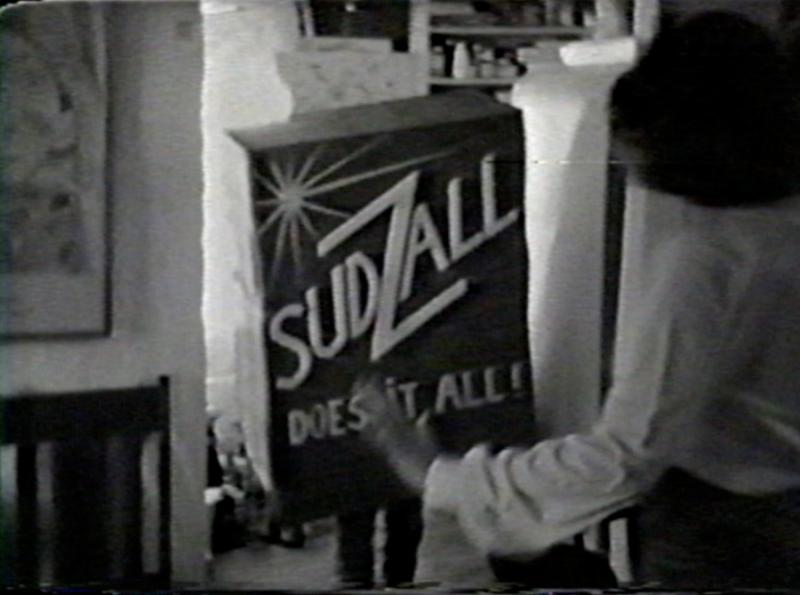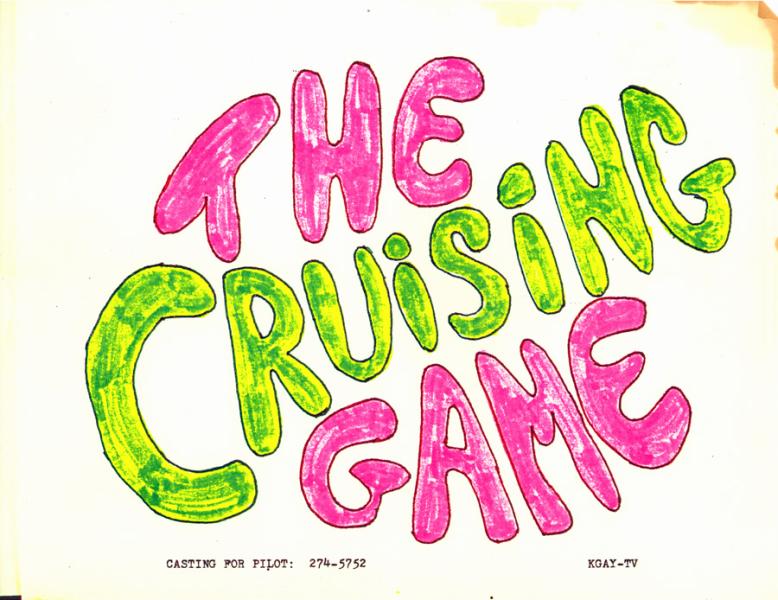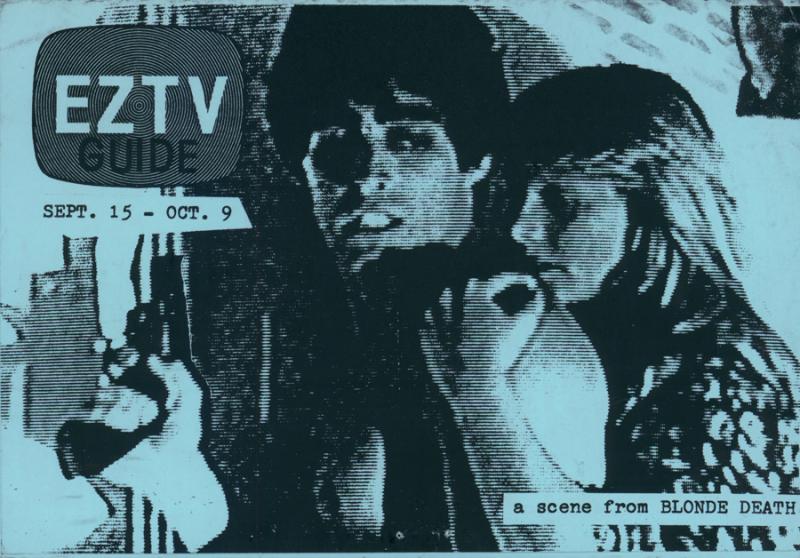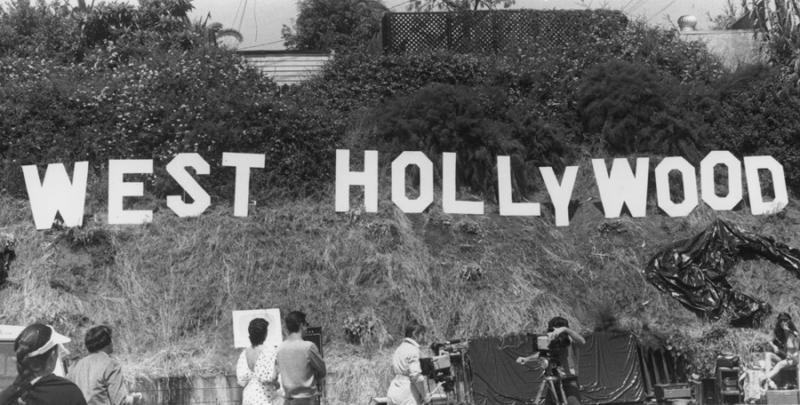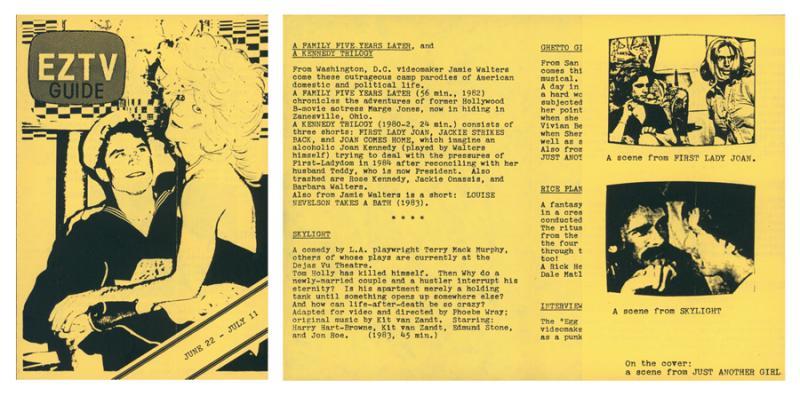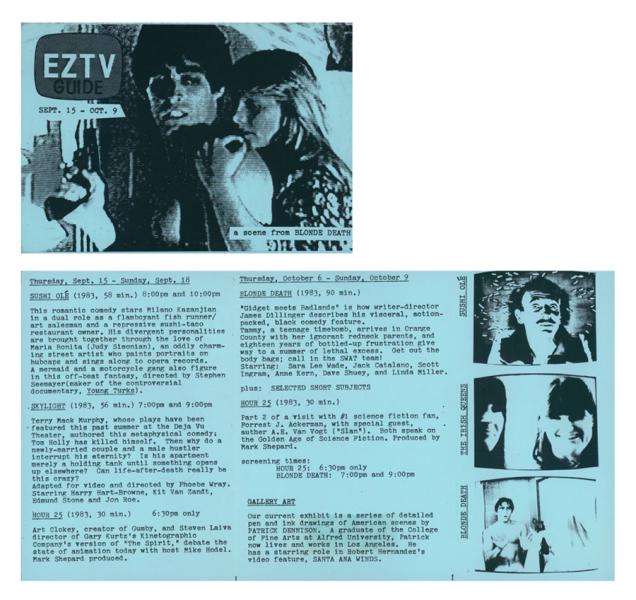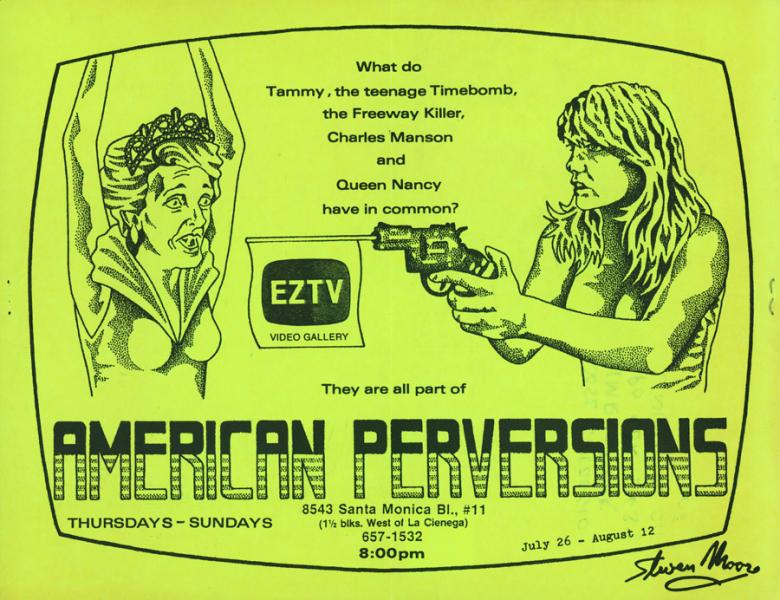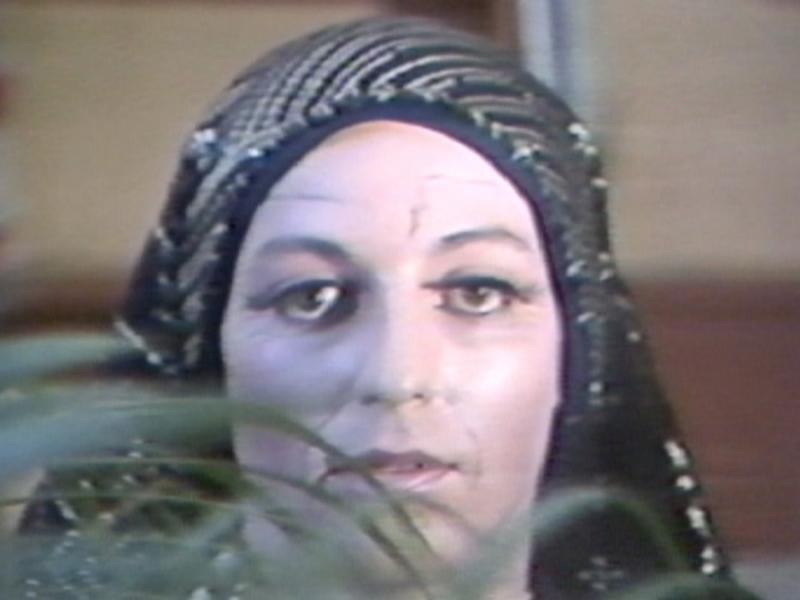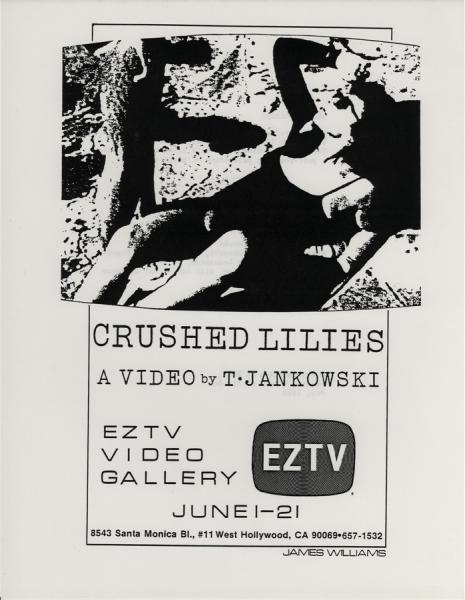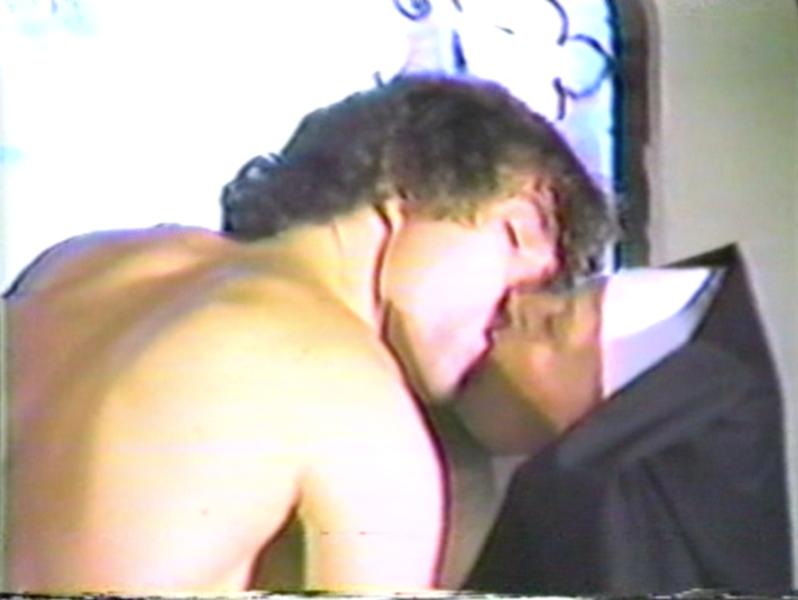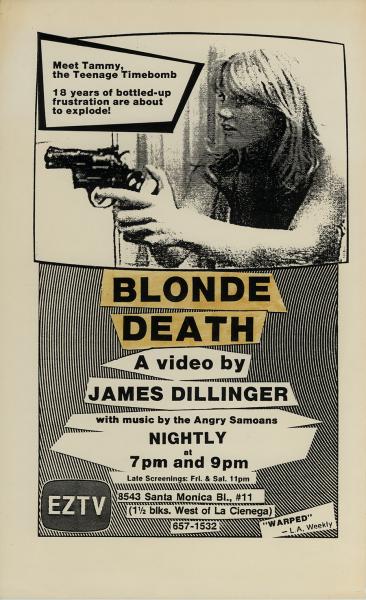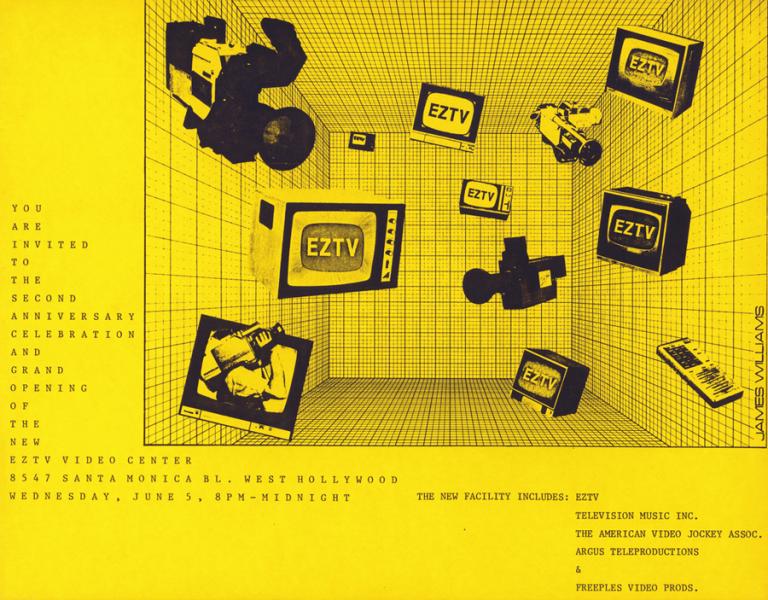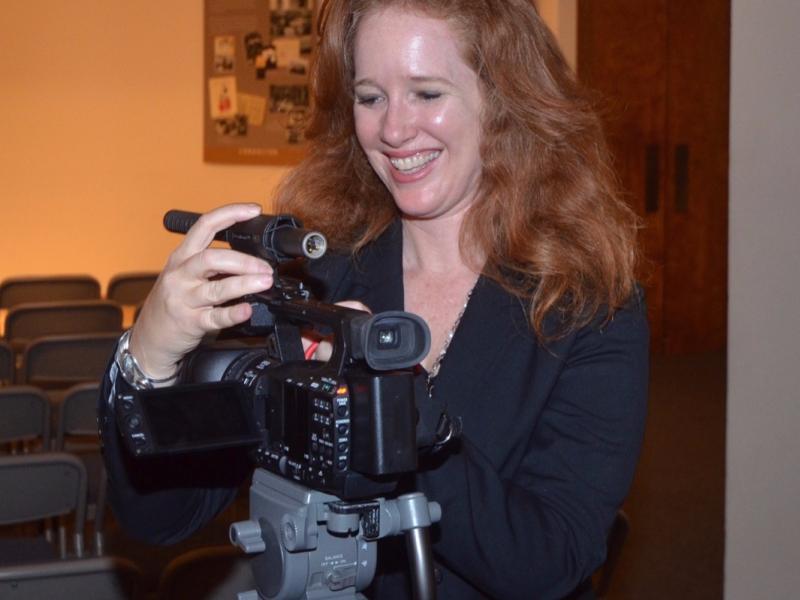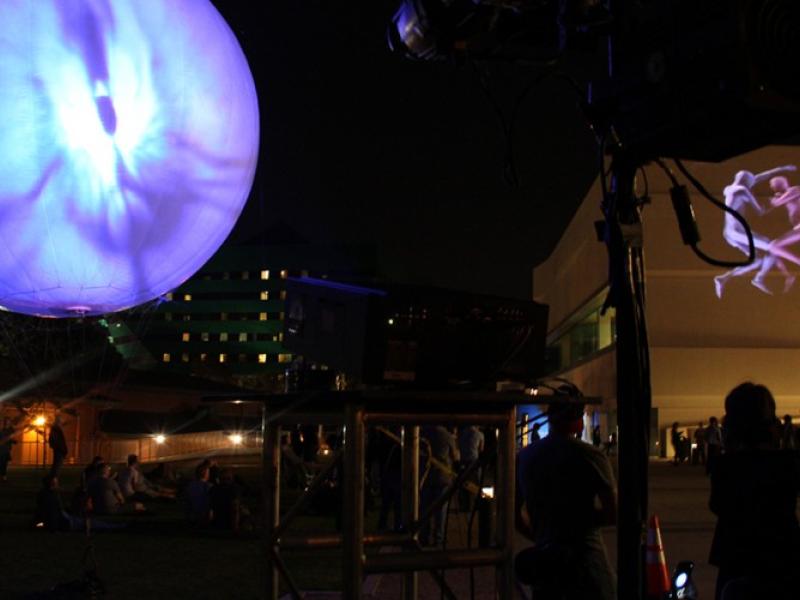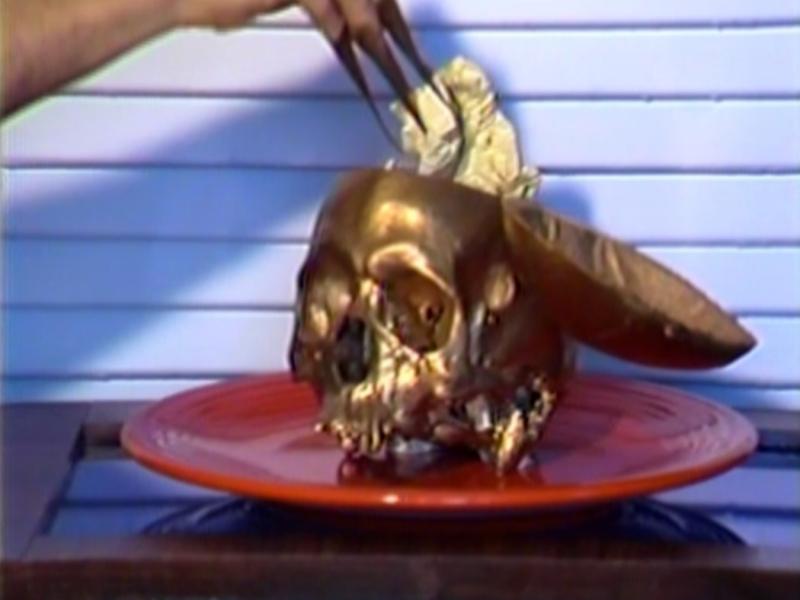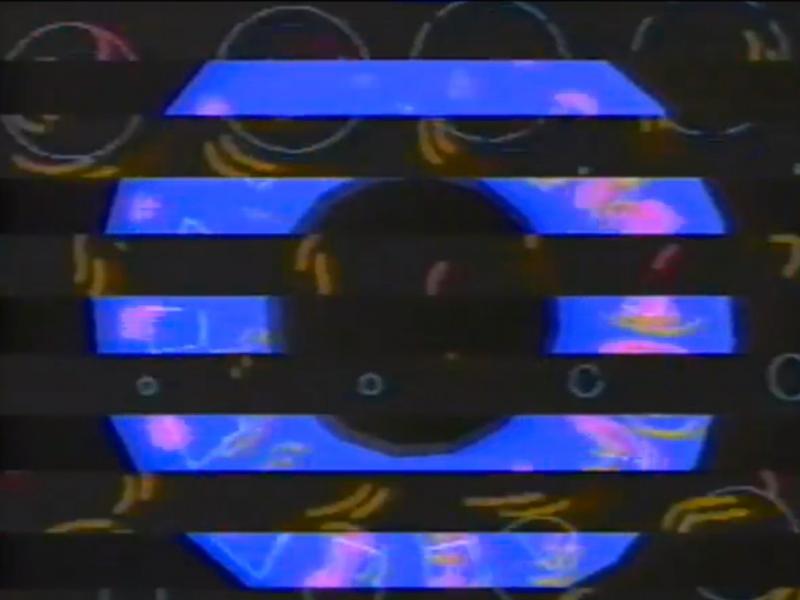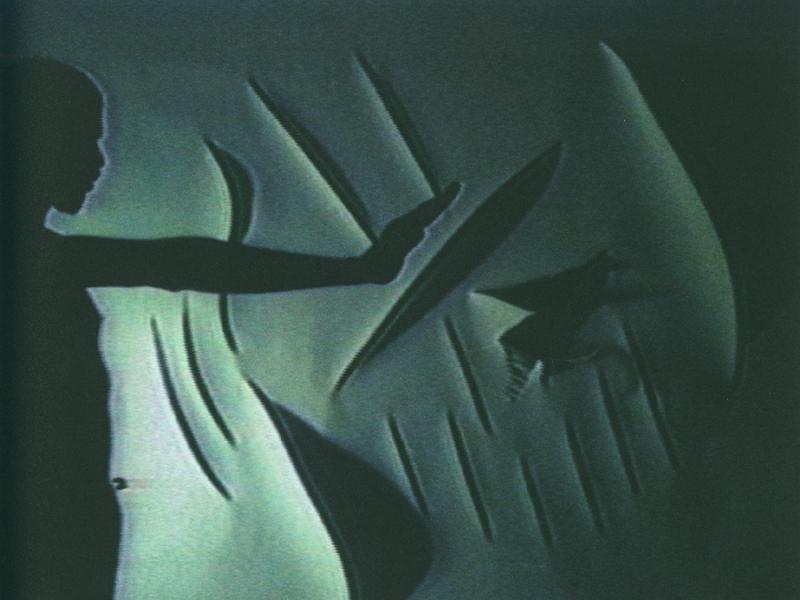Screening and opening reception: Saturday, March 15, 2014
Screening, 5-6:30pm; Reception, 6:30-9pm
Find information on additional programs in conjunction with this exhibition below.
ONE National Gay & Lesbian Archives presents EZTV: Video Transfer at the ONE Archives Gallery & Museum, an exhibition and screening series exploring the history of EZTV, a pioneering video space founded in West Hollywood in 1979. Perhaps the country’s first micro-cinema exclusively dedicated to video, EZTV was both a screening venue and production house. Through the exhibition, accompanying screenings, and public discussions, EZTV: Video Transfer looks to excavate how the space supported queer video, as well as more generally, its involvement with alternative video practices, performance, art, and community-building.
While EZTV was not a queer identified space in name or mission, many of the early members produced queer video projects reflecting the wide diversity of possibilities the newly accessible medium of video facilitated. These included campy shorts, feature-length narratives and documentaries, and experimental video installations, among numerous other projects that often would not have had a context to be seen outside of EZTV.
Explaining the space’s aesthetic vision during the 1980s, co-founder Michael J. Masucci explained, “We get criticized for too much diversity but we take our cue from television: programming as opposed to curating.” Whereas other art venues exploring video at the time, such as the Long Beach Museum of Art, were oriented to gallery viewing, EZTV emphasized cinema-style screenings of often wildly divergent interests. For example, within a single week the space might screen a political documentary, EZTV’s long-running science fiction show Hour 25, T. Jankowski’s pyscho-sexual shorts on obsession, or Jamie Walter’s campy portrait of the artist Louise Nevelson. Additionally, early on EZTV invested in documenting and screening live performances, such as actor and playwright Michael Kearns’ The Truth Is Bad Enough (1983), which would be videotaped by EZTV and then screened at the space on multiple-occasions.
Into the 1980s, EZTV’s programming increasingly blurred distinctions between video, performance, visual art, and digital media. EZTV gained prominence in the 1990s as a hotbed for experimentation with early digital art, computer graphics, and large-scale projections. The exhibition and screening series strives to reflect this dedication to experimentation and openness.
The exhibition at the ONE Gallery features video and archival documents exploring the space’s trajectory during its time in West Hollywood. This includes documents and videos by EZTV’s founder John Dorr, who produced possibly the world’s first feature-length videotape Sudzall Does It All (1979); sketches and notes by Dorr about unrealized projects such as an imagined alternative TV station KGAY; flyers and other archival materials related to the dark and hilarious EZTV hit Blonde Death (1984) by James Dillinger (aka author James Baker); abstract video works by EZTV’s artistic director James Williams; video documentation of a performance by the late Frank Moore, whose work tackled eroticism and disability; documentation of a performance by Chicano artist Luis Alfaro; video footage of private performances by Johanna Went; and documentation of a restaging of plays by Shakespeare organized by punk musician and artist Tomata du Plenty; among numerous others.
The title of this exhibition speaks not only to the media on display – all videos in this exhibition are recent digital copies – but also the recent donation of the EZTV video archives, a massive collection of over 300 videotapes, to ONE Archives at the USC Libraries. While locally recognized throughout the 1980s and 90s, EZTV’s role as a queer video center has gone largely unacknowledged and undocumented. This exhibition seeks to draw attention to this rich history of alternative video in Southern California and to this important legacy now preserved at ONE.
EZTV: Video Transfer is organized by David Evans Frantz, Curator at ONE National Gay & Lesbian Archives. Generous support for this exhibition and related programs is provided by the City of West Hollywood through its Arts and Cultural Affairs Commission. Additional support provided by Westside Media Group. Media preservation assistance provided by the USC Cinematic Arts Hugh M. Hefner Moving Image Archive.


